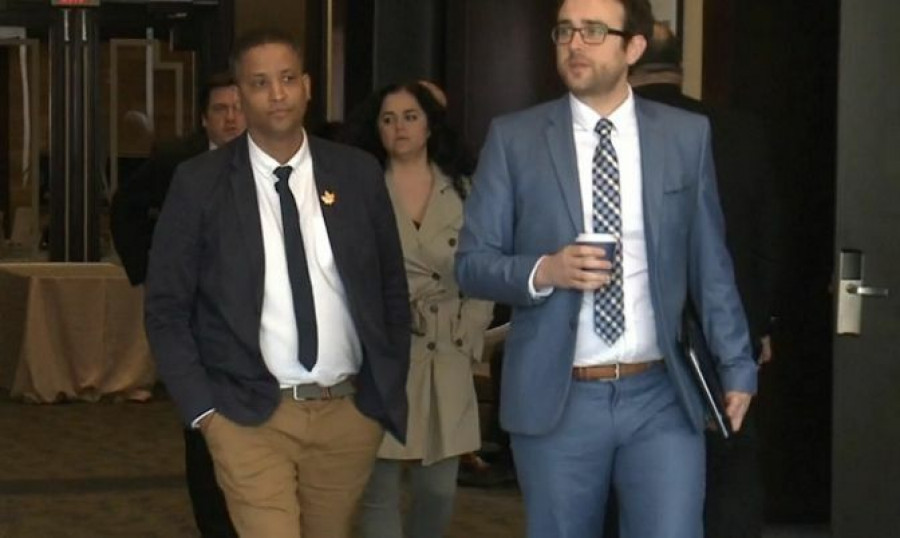Green says he is “unsurprised” by the final decision and asserts that “a hearing officer who is not racialized cannot understand what it is like to be racially targeted.” Unsatisfied with the outcome, he intends to escalate by pursuing an application he started with the Human Rights Tribunal of Ontario.
Green, who made history in Hamilton when he became the first Black person to be elected to city council, has been vocal about the controversial practice of “carding” since 2015. His anti-carding advocacy amplified when he filed a complaint against the HPS for being what he believed to be, racially profiled while waiting at a bus stop near the Stinson area. According to Constable Pfiefer, he was conducting a “well-being check” as Green appeared “mentally unstable” and unusually dressed for the weather. Bernard Cummins, Pfiefer’s lawyer, claims this was “justified” considering the Stinson neighborhood is "saturated with mental health problems." Green maintained that it was not a friendly encounter and that he felt “psychologically detained,” “intimidated” and “humiliated.”
Green describes the daily experience of persons with mental illness (PMI) who come into contact with police in Canada. Therefore, what could have received more attention in Green’s case is how mental health status impacts civilian and police interactions in Canada. According to a report published by the Mental Health Commission of Canada, 1 in 20 police-civilian encounters involved persons with mental illness or substance abuse issues. It also found that that 20% of encounters were related to criminal activity compared to 40% of encounters that were unrelated to criminal activity for example, mental crisis calls.
Research has shown that PMI are more likely to have several police encounters in their lifetime. In fact, a Canadian study found that “people with mental illness who came into contact with the police had more than five interactions compared with 4% among those without mental illness.” The report also showed that community interactions between police and PMI begin with the officer and 50% end up in referrals to psychiatric services.
Despite a lack of evidence showing a connection between mental illness and risk of violent behavior, there is a misconception that de-escalating a psychiatric crisis requires the use of force.
One U.S. study found that officers who are not adequately trained to identify and diffuse mental crisis are more likely to resort to the use of excessive force.
Race and ethnicity may also influence how a police officer perceives someone in psychiatric crisis. A Toronto-based study that examined how different ethnic and racial groups access psychiatric services found East and South Asians are more likely to be “coerced” into receiving psychiatric treatment by police than Black African and Caribbean people. This may speak to the disproportionately high rates of police-related gun violence towards Black people. A compelling example would be 45-year old Andrew Loku who was lethally shot in his subsidized apartment complex in Toronto while in crisis within seconds of police contact. This may also explain why Black people are overrepresented in Canadian prisons.
The criminalization of PMI traces its roots back to deinstitutionalization and is teetering on the brink of national crisis. Decision-makers have tasked police as first-responders to psychiatric emergencies without the necessary training to do so safely. Several initiatives are underway that aim to reduce interactions between police and PMI. For example, in Manitoulin, Ontario, a team of health professionals, police and civilians introduced a community-based framework to provide province-wide mental health training to police officers.
It’s critical that resources are invested in community mental health services to reduce the risk and rates of psychiatric emergencies and suicide. According to a 2016 Ontario Ombudsman report, there is “abundant research to demonstrate that inadequate mental health care results in an increase in interactions between police and PMI, as well as an increase in policing costs.”
In 2015, the HPS in partnership with St. Joseph’s Hospital introduced the Mobile Crisis Rapid Response Team – an unprecedented move in Canada -- which sends a mental crisis worker with the officer when they are dispatched for a psychiatric emergency. However, the recent fatal shooting of 19-yr old Quinn MacDougall suggests they may be overlooking major gaps in the implementation of this model.
It’s an uphill battle, but we must remain unwavering in our pursuit of providing enlightened community mental health treatment and eliminating targeted police violence.
Halima Al-Hatimy is an Ontario-based anti-carding and community health advocate with nearly a decade of immersive experience in Ontario’s healthcare system. Currently, she is the director of health policy and evaluation for Black Health Alliance.

 By Halima Al-Hatimy
By Halima Al-Hatimy 





